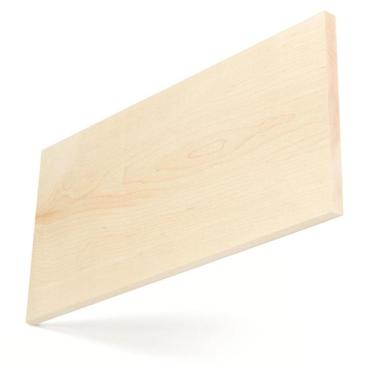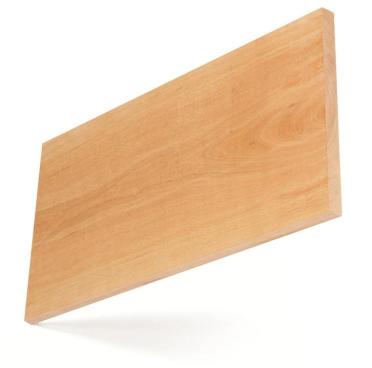The three timbers at the heart of the exhibition all grow abundantly in American hardwood forests, making up a total of 40% of the forest volume between them, but are currently underused in the design sector.
Each plays a key role in the forest ecosystem, and all contribute significantly to its diversity and sustainability. In addition to being easily renewable and serving as a natural and vast carbon store, the woods are also strong, tactile, versatile, and aesthetically appealing – but all have their own distinctive traits and features.
Hard maple
American hard maple, growing naturally in the hardwood forests of North America, is world-renowned for its delicate colour, hardness, fine grain and finishing quality.
It is a cold climate species, although trees can grow throughout the USA in mixed hardwood forests, but favour the more northern states. The species is quite different from other maples throughout the world. The trees often grow in dense stands on many types of soil and are also farmed for their famous maple syrup. Harvesting the trees is seasonal (autumn and winter).

Cherry
American cherry makes up just 3% of the American forest resource overall, but in the northern Appalachians and particularly Pennsylvania and West Virginia it is very abundant and widely available. Cherry has a relatively short rotation, taking less time to mature than other hardwoods.
The narrow sapwood is a light pinkish colour, while the heartwood varies from rich red to reddish brown, and darkens on exposure to light. It is a high-quality cabinet wood and may contain streaks of lighter sapwood and dark gum pockets. With a straight unpronounced grain and fine texture, the wood is medium density and moderately strong. It is easy to machine, shape and connect, and when sanded and polished, produces an excellent smooth, glassy finish.

Red oak
American red oak is the dominant species in the U.S. hardwood forest. It has a distinctive grain and wood that is not always red in colour. The name comes from the leaf colour in the fall. Red oak may be sold on the basis of ‘northern’, ‘southern’ and ‘Appalachian’.
Red oak trees grow only naturally and almost exclusively in North America, although planted elsewhere. They are widely distributed throughout most of the eastern United States in mixed hardwood forests. The trees are very tall. There are many sub-species, all within the red oak classification, which grow from north to south; some high in the mountains and others on low land giving rise to different characteristics. Thus there are significant variations in red oaks depending on location, in particular between the slower grown northern and faster grown southern trees. Red oaks are regarded as highly sustainable for both domestic and export consumption and, being the largest species group, are more abundant than the white oaks.


